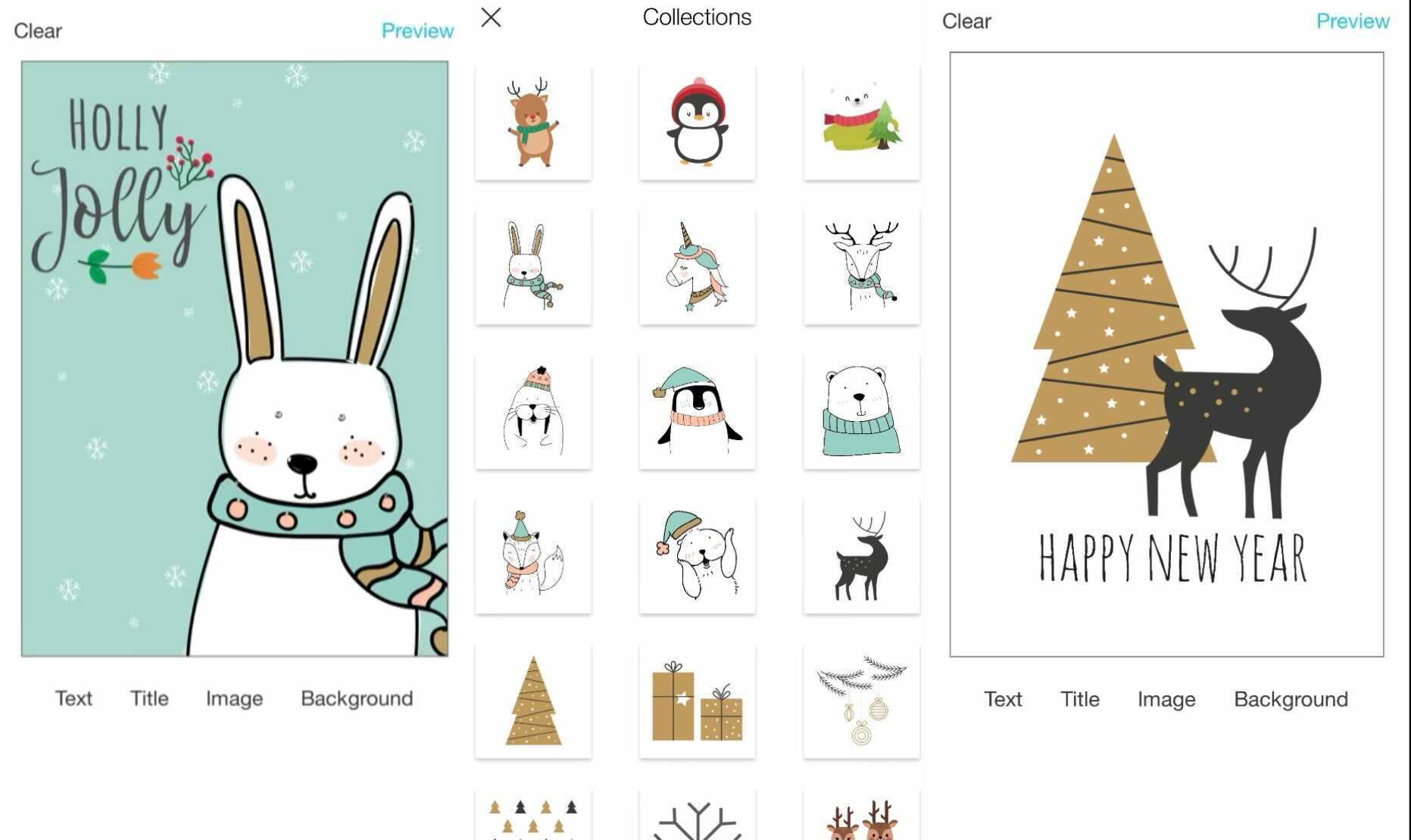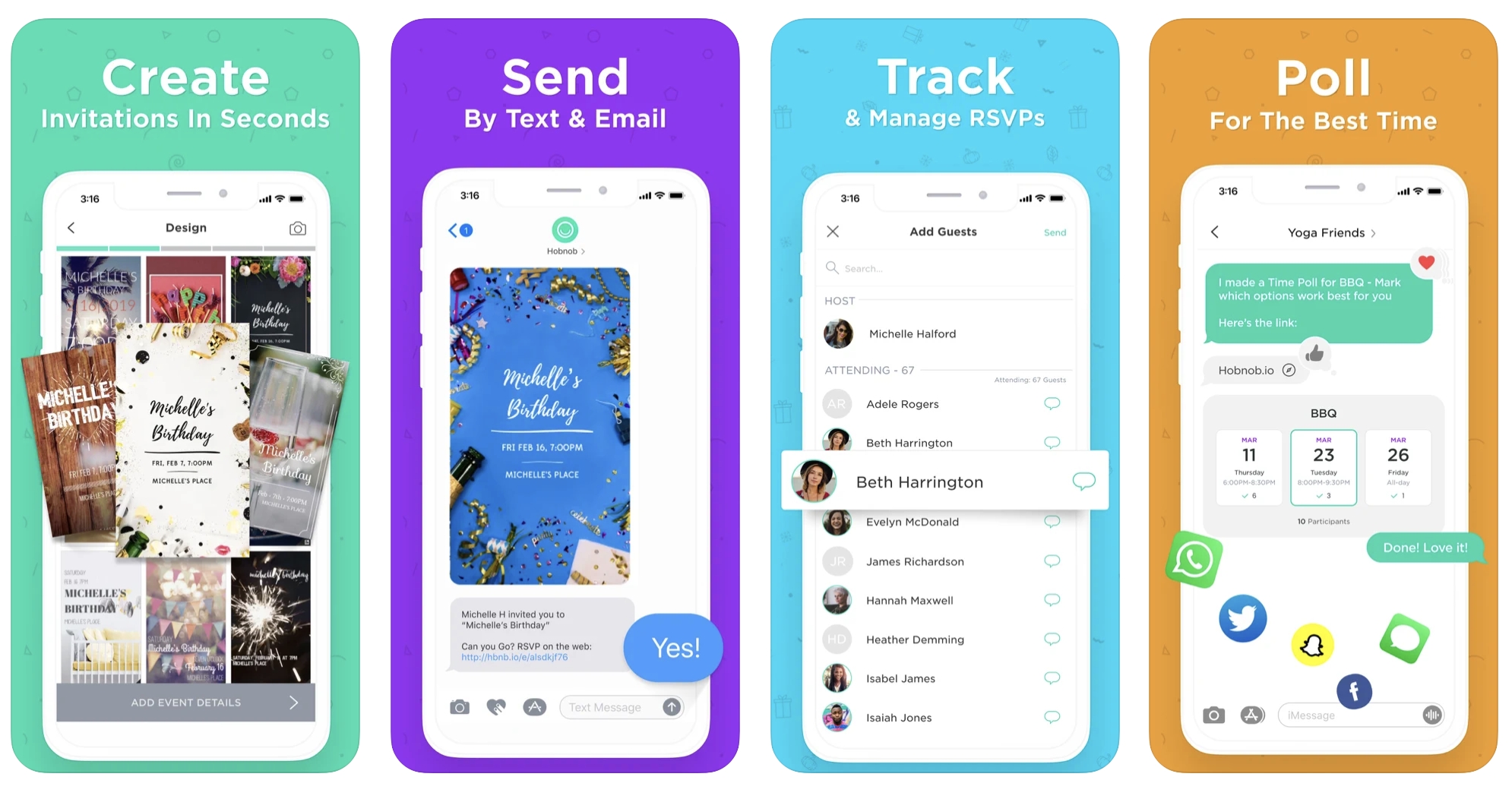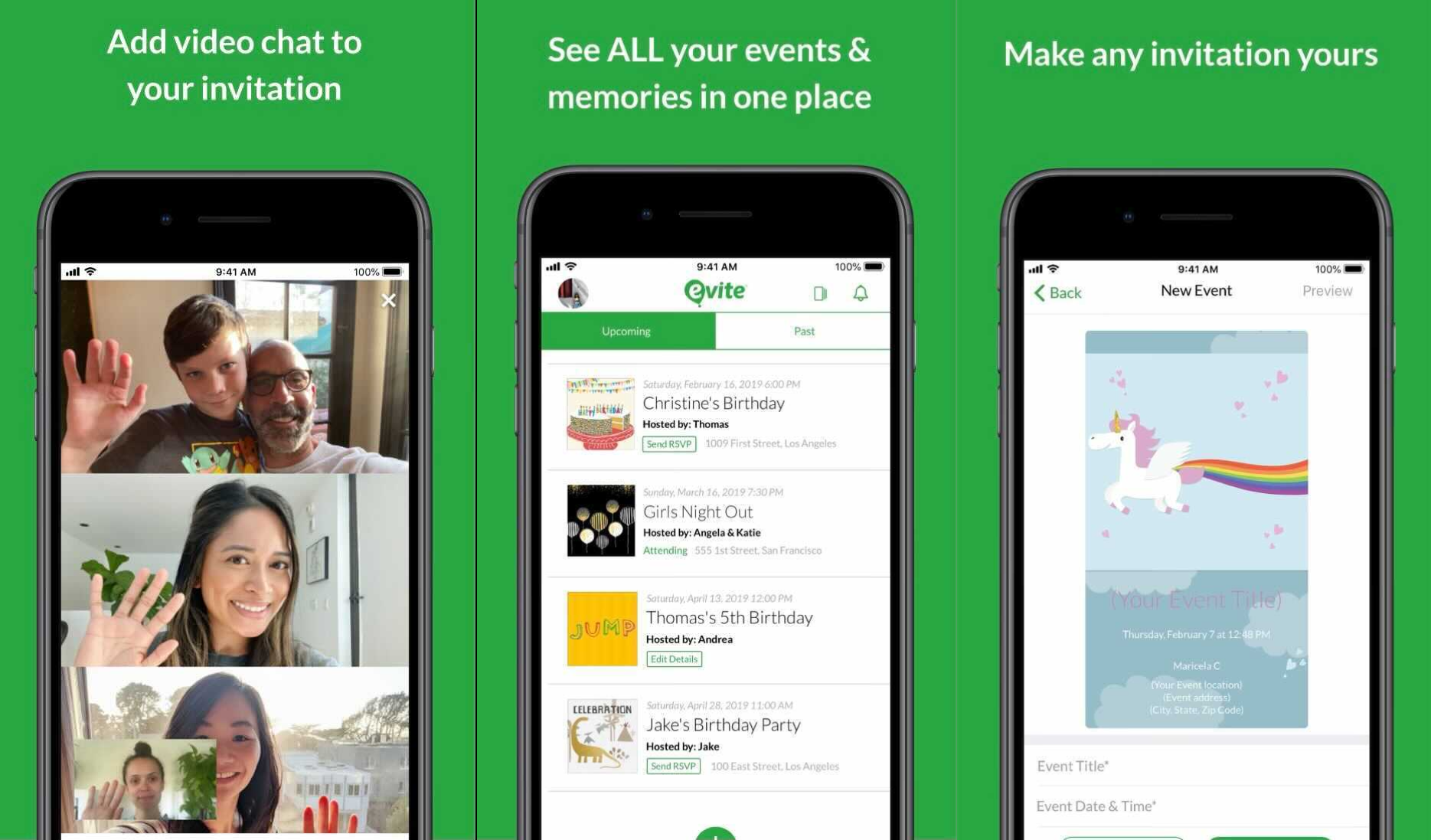A decade ago, when you made a new friend IRL, you’d add them on Facebook. You’d see each others’ posts and, eventually, when you wanted to invite them to a party, you’d create an event page and add them to it.
But now, when you meet someone new, maybe you’ll follow them on Instagram or Twitter or no social media at all. And none of those platforms have a solid way to invite someone to an event.
Now that we can carefully and safely have small events, I’ve put together a list of all the ways you can invite people over. From worst to best:

I recently invited one of my group chats over for brunch and used a group text
Credit: Screenshot/ Mashable
The modern version of sending out paper invitations, texting your friends to invite them to a party is a classic. It’s also terrible, because it’s difficult to maintain a list of yeses and nos. You’re going to receive individual follow up texts instead of bulk messages, and if anything changes to your event as the day nears — like a time change — you’ll be forced to send out individual texts to everyone again.
Post Contents
Pros:
- You likely already have your guests’ phone numbers or emails, so contacting is easy
- It’s ideal if you’re only inviting a small number of people
Cons:

An invite my roommate made for our housewarming party this year. We posted it to our close friends story on Instagram.
Credit: Screenshot/ Mashable
This is less terrible than texting people, but still not great. It’s fun to create a little image representing your event, but then you have to go through your friends list and tailor your close friends to only people you want to come to your party. And then you have to hope that your friends see the story, register that it is a party you want them to attend, and then put it on their calendar. Plus, stories only stay up for 24 hours, so you’re bound to have to field tons of follow ups.
Pros:
Cons:
- Not everyone has Instagram
- Guests can’t see who else is on the invite list
- It’s difficult to keep up with the guest list
- You can’t guarantee everyone on your close friends will view your story

Huge Happy Holiday’s vibes
Credit: Screenshot/ Mashable
Red Stamp is a social commerce company first, but it also hosts an invitation system that sort of combines using an app, texting, and using social media platforms to invite people to your event. You can use the app to send invitations via email, text, or posting on Facebook, Instagram, or Twitter.
Pros:
- Hosts can see a virtual mailbox, which helps consolidate and manage RSVPs
- You can include all the details in the invite, so you won’t have to repeatedly ask for an address or dress code
Cons:
- Reviewers have complained that it’s difficult to personalize your invites, and that the new update on the app made it a bit more clunky
- It isn’t as interactive as other platforms
Red Stamp is available for iPhone on the Apple App Store.

Super simple, but requires a download.
Credit: Screenshot/ Hobnob
Hobnob is a new app created specifically to fill the party-invite void left by Facebook.
Pros:
- You can see the guest list
- It’s easy to keep track of
- Hosts can include all the details in the invite, so you won’t have to repeatedly ask for an address or dress code
- When you update the event, you can inform your entire guest list at once
Cons:
Hobnob is available for iPhone on the Apple App Store or Android on the Google Play Store.

My friend is having a release party for her new song, and sent out the invite on Partiful.
Credit: Screenshot/ Partiful
New platforms like Partiful are trying to become the next place for party invites. And it isn’t terrible!
Pros:
- You can see the guest list
- It’s easy to keep track of
- Hosts can include all the details in the invite, so you won’t have to repeatedly ask for an address or dress code
- You can send a link to this any way you want — email, text, Facebook messenger — which means you can invite guests who you know from anywhere
- The site is very hip
- It’s a web tool, so you aren’t asking anyone to download a new app
Cons:
- You have to create an account and enter your phone number to RSVP
- The fact that no one wants to make a new account on a new site could skew the actual number of people who are attending

An oldie but a goodie
Credit: Screenshot/ Mashable
Evite has been around for a while, and lets you send e-cards to people online. It works for birthdays and holidays in lieu of a paper card, and you can use it to send invites to parties, too.
Pros:
- You can see the guest list
- It’s easy to keep track of
- Hosts can include all the details in the invite, so you won’t have to repeatedly ask for an address or dress code
- There are added details you can include in the invite, like polls and gift recommendations
- You can send a link to this any way you want — email, text, Facebook messenger — which means you can invite guests who you know from anywhere
Cons:
Evite is available for iPhone on the Apple App Store or Android on the Google Play Store.

When one of my friends threw a house party, she sent out the invites on gCal.
Credit: Screenshot/ Mashable
As a virgo, sending an invite with all the information for an event directly to my calendar is akin to one of the most caring acts you can do for me. This is, inarguably, the best way to invite people to parties.
Pros:
- It automatically goes onto your calendar, so you won’t forget
- You can see everyone else on the guest list
- Hosts can include all the details in the invite, so you won’t have to repeatedly ask for an address or dress code
- You can add a cute lil picture to the invite
Cons:
gCal is available for iPhone on the Apple App Store or Android on the Google Play Store.
And, please, keep in mind: No matter how you choose to invite people to your parties, don’t forget to invite me.
